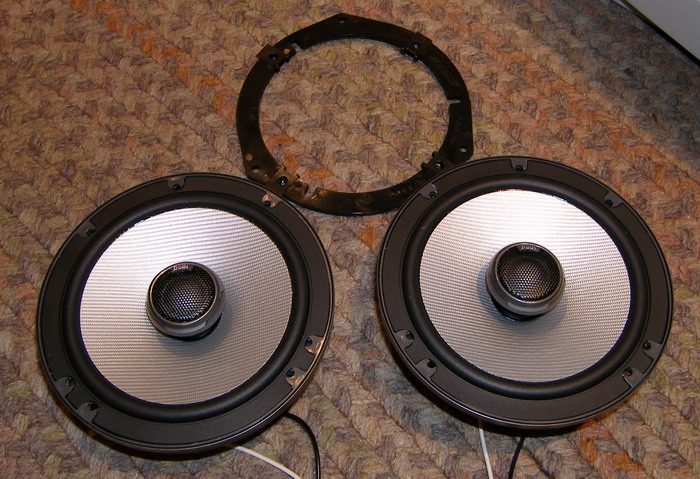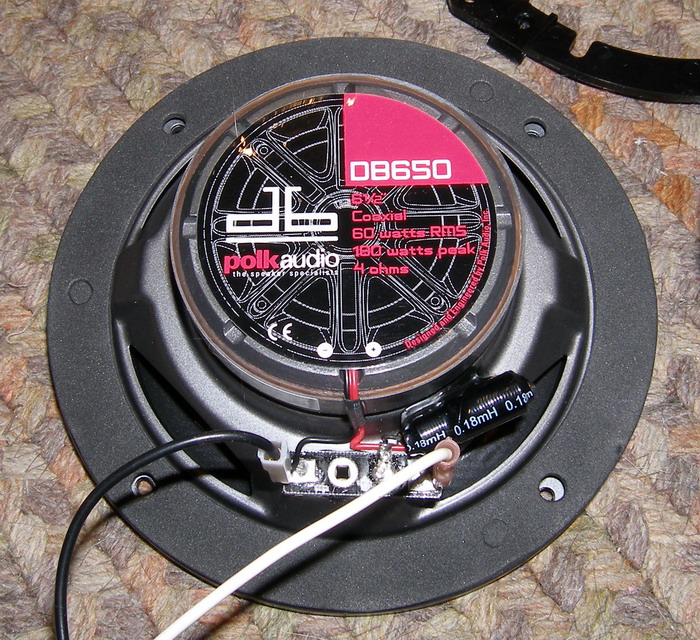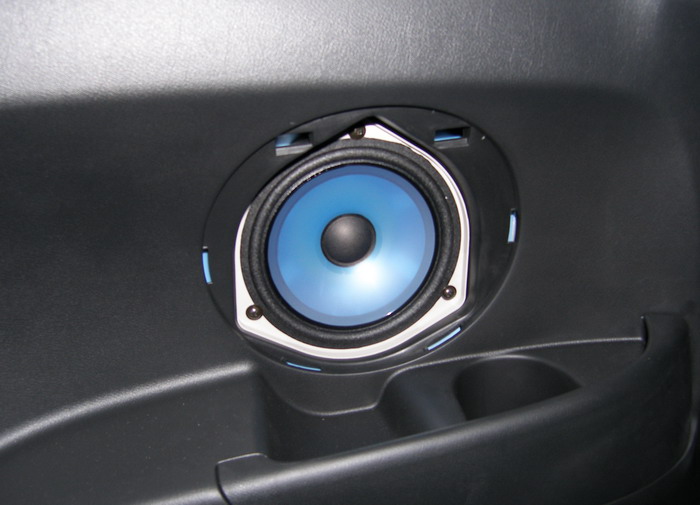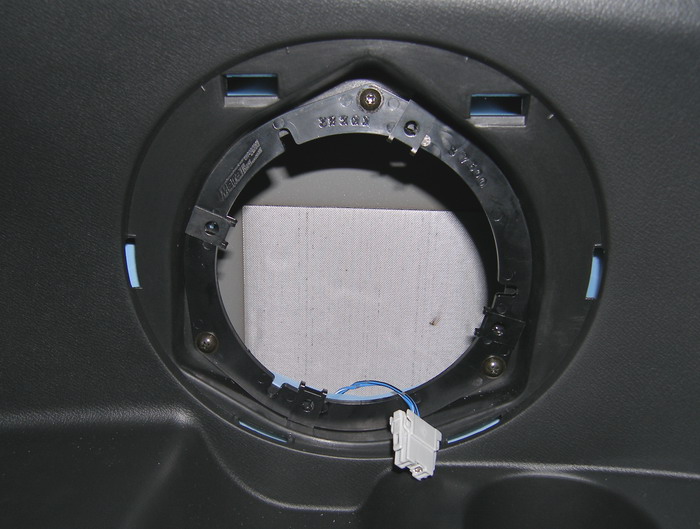Doug's 2006 Acura RSX
Stereo Installation
Page 1 of 3

The base Acura RSX comes with a mediocre stereo. The Type-S has a Bose system but I've heard that's nothing to write home about either. In any case, I found the stereo lacked clarity or a satellite radio option, so it didn't take me long to figure out the stereo needed to be replaced.
The woofers in the base Acura are 6.5" and the drivers are made of polypropylene. The only tweeters in the car are mounted in the far corners of the dashboard and are 3/4" units. The speakers aren't really that bad for stock units (I've heard worse, believe me) but even the most basic of aftermarket units will be an improvement.
Because replacement of the rear speakers was the easiest of the various tasks before me, I did that first, followed by the headunit then the XM radio receiver with antenna.
Rear Speakers
Some would say the rear speakers are used as filler. Others would suggest that having tweeters anywhere behind the front seats would destroy imaging. I've never found either to be true. The BMW has tweeters on the rear deck (coaxials, actually) and I've always enjoyed the way systems sound with high frequencies provided at all four corners. The RSX's OEM rear speakers are nothing more than full-range drivers with very poor high-end response, so I chose to install some coaxials in the rear locations to brighten things up.
I've been buying Polk Audio for years, so I picked up a pair of db650's from Crutchfield. I could have bought them elsewhere, but Crutchfield is an authorized Polk Dealer and thus Polk will honor their warranty. One benefit of ordering from Crutchfield is that they provide the physical adapter (pictured between the drivers, below) as well as the wiring adapters with the order for "free". This makes the task plug and play.

Below is a picture of the rear of the drivers. The key thing to note here is that they come with a gasket. It prevents vibration, helps seal the driver against the interior panel, and, as I found out, nicely fills in the gaps around the pan head screws that mount the adapter to the vehicle's interior panel.

Pulling the grills off of the interior panels is easy. Almost too easy. I wound up pulling them off a few times and the last time I replaced them the clips didn't grab as well. If its one thing I hate about cars these days is that every fastener is designed to work about 3 times. Not to date myself, but I long for the days when everything used a freekin' screw. I could remove and reinstall it a thousand times and not worry about it actually doing its job. But I digress.

I'm not sure why Acura chose to make things difficult with these ridiculous triangular shaped mounting flanges, but the replacement speakers fit well enough with the proper adapters as you can see below.
When I pulled the speaker out, the first thing I noticed is the wiring is ridiculously thin. When/if I drive these speakers with a component amplifier I'll definitely need to upgrade the wiring, but it's fine when driven by the low-power headunit amplifier. The next thing I noticed was how small (non-existant might be a better description) the magnets were on these things. They're clearly not designed for high power operation.
The tinnerman clips shown came with the adapter plate. The speakers came with their own clips, but they're not designed for this application and will not work.
Some people said they put dynamat behind the speaker to prevent body panel resonance and reduce reflections. Acura now appears to put some anti-vibration mat on the body panel so I'm not sure any additional would result in a noticeable difference. I suppose it would be a no-brainer to do it while the speaker is out, but I didn't see the point in spending the money.




